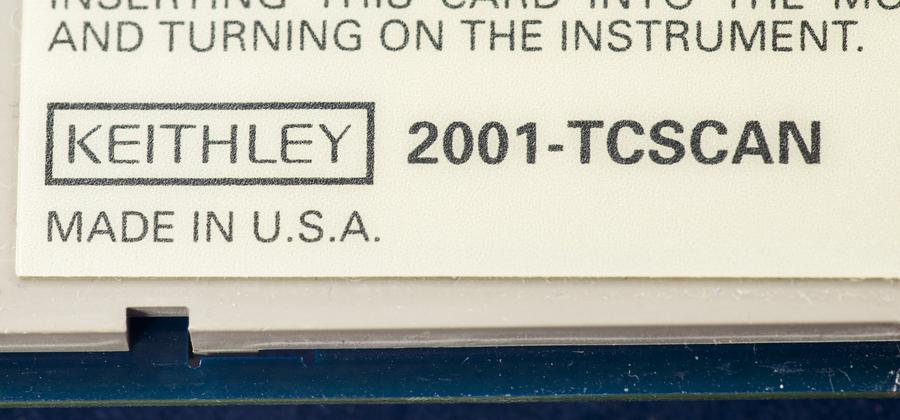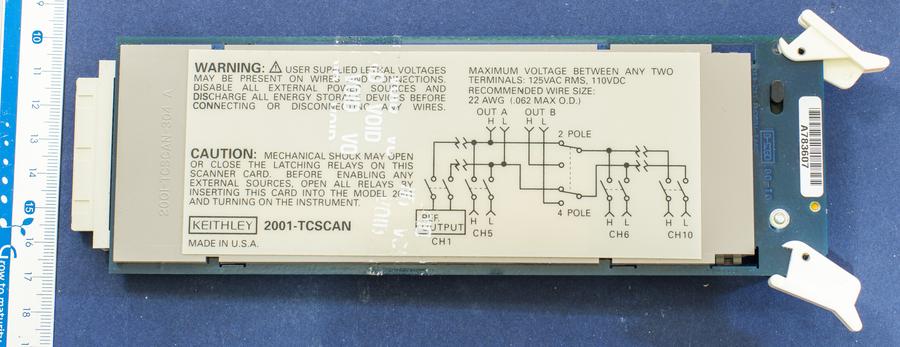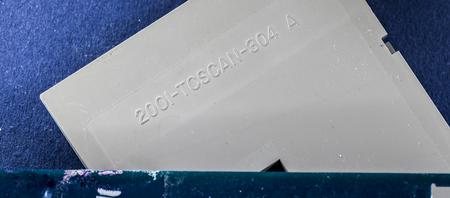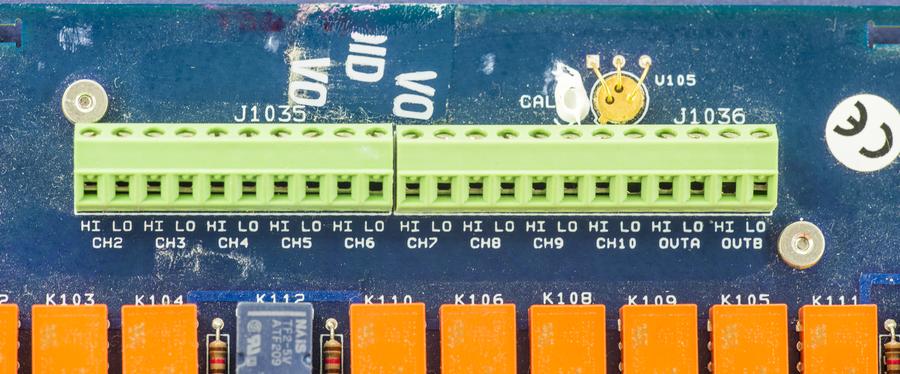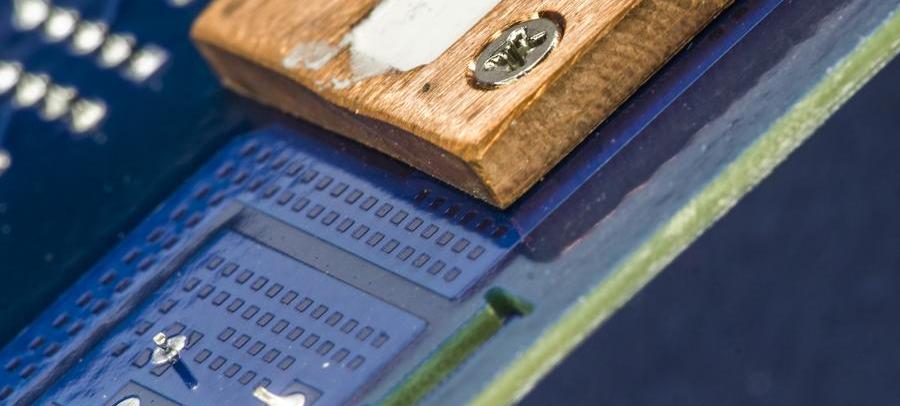Intro
Some of DMMs allow expansion with scanner cards and options, useful for automation and production testing setups. One of these cards will be evaluated and studied today in quick teardown. Model 2001-TSCAN from Keithley is 10-channel scanner card, with one of channels dedicated for internal temperature sensor, useful for thermocouples cold-compensation.
2001-TCSCAN card has plastic covers on both sides (top cover not shown on photos) to reduce stray drafts and airflow around connectors, which could introduce large EMF errors.
Manuals
Model 2001-TCSCAN Instruction manual, Rev.B
Teardown
Bottom cover has a label sticker with connections and model number. It’s not required to remove for cover detachment from the PCBA.
PCBA is 6-layer, with lot of thermal mass in inner layers to help equalize temperatures across PCBA. Interesting to note, as even main analog PCBA of Keithley 2002 still only using 4-layers.
Card locks in place with white handles.
Connector to main digital board of DMM is Hirose PCN10C-32S-2.54DS or similar. Schematic of the card is publicly available in card’s instruction manual, so it’s not hard to make own custom scanners for Keithley DMMs.
U104 TL7705 is reset supervisor, MICREL 5841YN are simple serial latch drivers for relay control
Input connections
Input signals and output wiring is connected thru bare wire therminal blocks. All channels HI and LO are isolated, so they has to be routed differentially to test input signals. Scanner card has impact on measurement accuracy due to voltage offsets in signal path. The main source of this parasitic offset voltage is the contact potential of the relays, typically < 500nV. Channels 2-4, 6-9 have the lowest offset (specified 1 µV worst case), and channels 5 and 10 have higher offset (<2 µV). For a thermocouple measurements with Type K probe this 1µV offset produces 0.024°C of error.
Output connection (usually rear inputs of DMM) done via OUTA and OUTB pairs. Channel CH1 is tied to U105, which is Analog Devices AD590MH in TO-52 hermetic package, thermally coupled to thick copper block.
This copper block mounted on bottom side of the board, right under therminal blocks to equalize temperature over the connector pins. Thick copper bar have very good thermal conductivity and lot of thermal mass. With thermal sensor and thermally conductive silicone glue whole block kept at more uniform temperature, to allow proper thermocouple cold-junction compensation.
Small temperature gradient still develops across the connectors. Reference error due to this for CH 2-6 is 0.22°C and 0.55°C for CH7-10.
Temperature sensor is laser trimmed to ±0.5°C calibration accuracy and has good linearity, typical ±0.3°C over full range. It provides +59.23 mVDC at reference temperature of +23.0 °C. Thermal sensor can be calibrated via special procedure and trimmer R151. Details are covered in instruction manual.

Sensor is mounted in dead-bug style in round PCB opening to have direct contact with copper block. DMM’s own banana jacks don’t have cold-junction sensors, so direct thermocouple connection would be compromised by large errors without tedious correction.
Copper block dimensions are about 24 × 95 mm with 2 mm thickness. Center section has a cutout for protruding therminal block pins.
And finally, comparison to our own xDevs.com X1801 card, featuring low noise isolated power supply for nanovolt preamplifier, such as Keithley 1801 or EM A10.
If one want to design own scanner card, PCB dimensions should be 203 × 68.7 mm or bit longer, if you want to have card’s connectors stick outside of the DMM chassis for easier access.
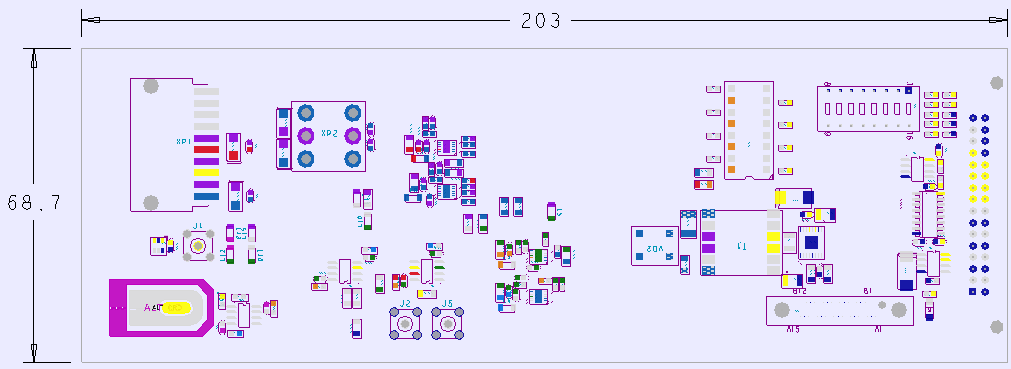
GPIB operation with TCSCAN card
Here’s python piece of code for GPIB command to control scanner card.
:ROUT:CLOS (@ 3)
This command close CH3 on 2001-TCSCAN.
:ROUT:OPEN:ALL
This command opens all channels on card.
:ROUT:OPEN (@ 5)
This command OPEN CH5 on 2001-TCSCAN.
Similar commands used for regular 2000SCAN card without thermal sensor compensation.
Modified: Oct. 25, 2016, 8:27 a.m.

